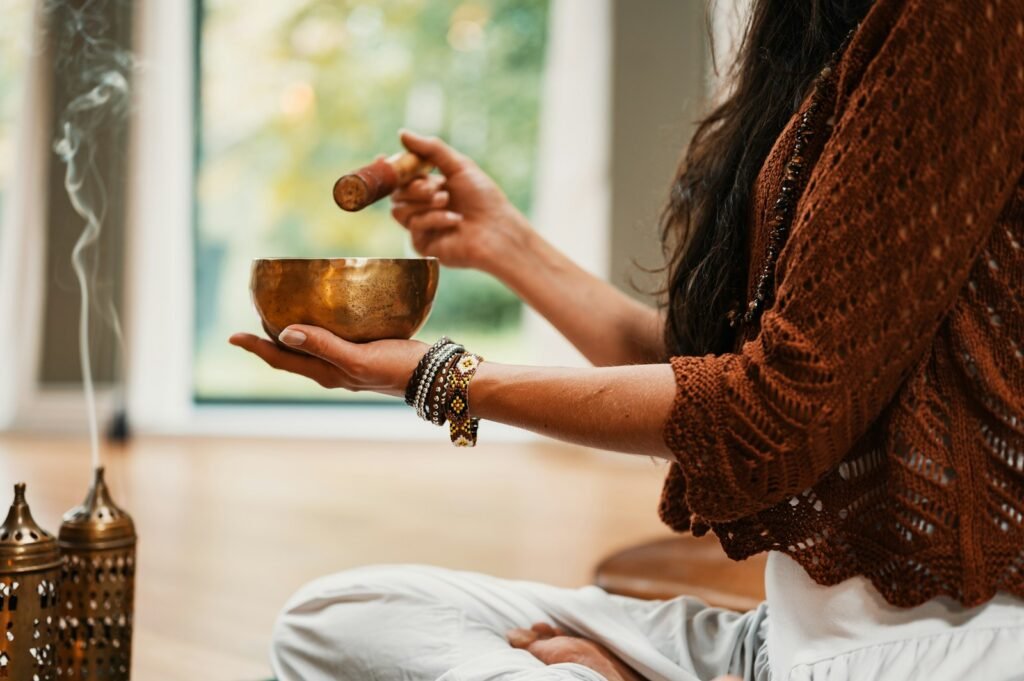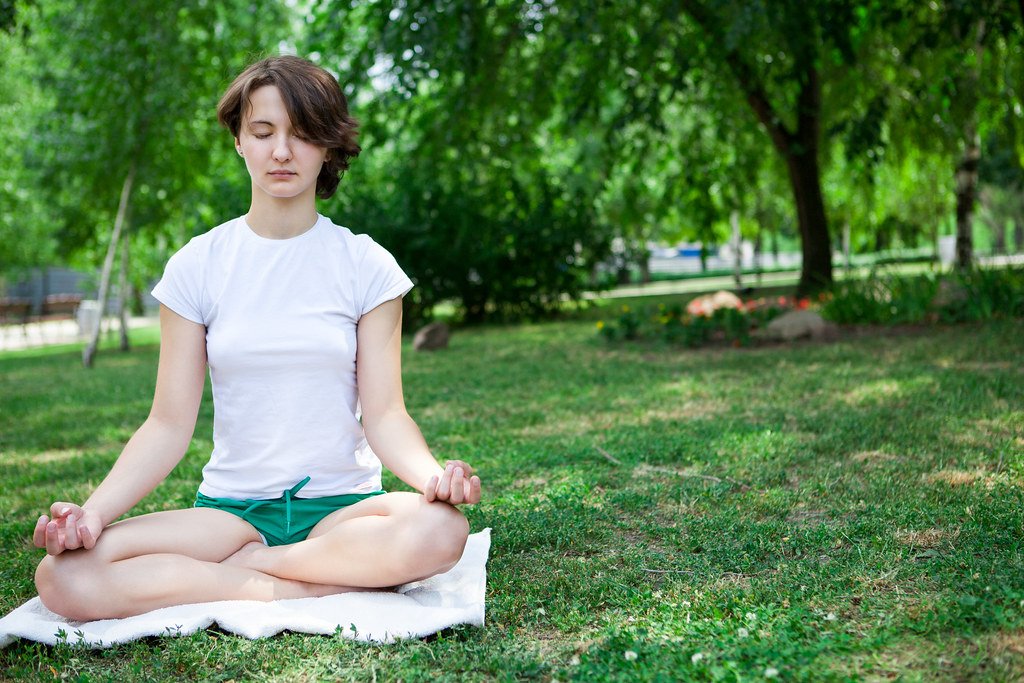
"The Wondrous Spectrum of Meditation Practices"
The “Spectrum of Meditation Practices” refers to the wide range of meditation techniques and styles across different cultures, traditions, and purposes. These practices vary significantly in their approach, focus, and intended outcomes, offering diverse options for individuals seeking mental, emotional, and spiritual benefits.
Introduction
Discovering the Diverse World of Meditation Practices
Meditation is often seen as a single practice, but it’s a vast and varied field with numerous techniques and approaches. This diversity allows individuals to find a practice that best suits their needs, lifestyles, and spiritual beliefs. Whether you’re seeking mental clarity, emotional balance, or a deeper spiritual connection, there’s a meditation practice for you.
What is the "The Spectrum of Meditation Practices"?
Diana Winston, the director of mindfulness education at the UCLA Mindful Awareness Research Center, describes the spectrum of meditation practices as a range of mindfulness techniques that vary in their focus and scope.
- Focused Awareness: This is the most concentrated form of meditation. In this form, attention is directed to a specific object, typically the breath. Practitioners gently return their attention to the chosen focus whenever the mind wanders.
- Investigative Awareness: Moving along the spectrum, this practice allows the meditator to notice other objects of meditation that arise, such as bodily sensations or emotions. Instead of immediately returning to the primary focus, attention can rest on these experiences for a while.
- Choiceless Awareness: In this practice, the meditator becomes more flexible and open to all arising experiences without focusing on any specific object. The mind can move from one object to another in a more expansive state of awareness.
- Natural Awareness: At the broadest end of the spectrum, this practice shifts focus from objects to awareness. The meditator rests in the present moment, effortlessly allowing all experiences to arise and pass without trying to control or fixate on anything.
What is Meditation?
Definition and Purpose
Meditation is a practice in which an individual uses a technique—such as mindfulness or focusing the mind on a particular object, thought, or activity—to train attention and awareness and achieve a mentally clear, emotionally calm, and stable state.
Historical Background
Meditation has been practiced since antiquity in numerous religious traditions, often as part of the path toward enlightenment and self-realization. It has evolved over centuries and now encompasses a wide range of practices.
Benefits of Meditation
Meditation reduces stress, improves concentration, increases self-awareness, and enhances emotional health. Scientific studies have also shown that it can reduce symptoms of anxiety and depression.
Mindfulness Meditation Practices
According to Buddhist teachings, mindfulness meditation is one of the most popular forms of meditation in the Western world. It involves paying continuous attention to thoughts, sounds, breathing sensations, or body parts. The practitioner observes their thoughts without judgment and brings their focus back to their breath or point of focus when their mind wanders.
Origins and Principles
Mindfulness meditation has its roots in Buddhist teachings. It is about being present and fully engaged with whatever we’re doing, free from distraction or judgment, and being aware of our thoughts and feelings without getting caught up in them.
How to Practice Mindfulness Meditation
To practice mindfulness meditation, find a quiet place, sit comfortably, and focus on breathing. Notice the sensation of the breath entering and leaving your body. If your mind wanders, gently bring your attention back to your breath.
Benefits of Mindfulness Meditation Practices
This practice can help reduce stress, improve attention, and enhance emotional regulation. It’s also been found to increase grey matter in the brain, which is involved in muscle control and sensory perception.
This is a simple yet profound method of meditation in which the practitioner sits with closed eyes and silently repeats a mantra. It requires two 20-minute sessions per day. Transcendental Meditation is known for reducing stress and improving emotional well-being.
History and Development
Maharishi Mahesh Yogi developed Transcendental Meditation (TM), which involves using a mantra to settle the mind into restful alertness.
Techniques and Practices
In TM, you sit comfortably, close your eyes, and silently repeat a mantra. This practice is typically done twice a day for 20 minutes.
Benefits of Transcendental Meditation
TM has been shown to reduce stress and anxiety, improve cardiovascular health, and enhance cognitive functions such as memory and creativity.
Guided Meditation
Also known as guided imagery or visualization, this technique involves forming mental images of places or situations you find relaxing. It’s typically led by a guide or teacher, making it an excellent option for beginners who might need help constructing mental imagery.
What is Guided Meditation?
Guided meditation involves being led by a guide or teacher who explains how to meditate and helps you visualize calming and peaceful images or situations.
Different Types of Guided Meditations
Various guided meditations exist for relaxation, sleep, healing, and stress relief.
Benefits and Applications
Guided meditation practices can be beneficial for beginners, as they provide structure and direction. They’re also useful for those with specific goals, such as reducing stress or improving sleep.
This meditation style involves concentration using any of the five senses. For example, you might focus on something internal, like your breath, or you can bring in external influences to help focus your attention. For example, you could stare at a candle flame, listen to a gong, or count mala beads.
Definition and Purpose
Focused Attention Meditation is a form of meditation where the practitioner focuses on a single object, thought, or sensation. The goal is to maintain this focus, gently bringing the mind back whenever it wanders.
Historical Background
While the practice of focused attention can be found in many meditation traditions, it is particularly prominent in Buddhist meditation. Due to its straightforward approach, it is often the starting point for beginners.
Key Principles
The core principle of Focused Attention Meditation is simplicity. By focusing on a single point, the mind learns to filter out distractions and achieve a state of deep concentration.
Mantra Meditation
Definition and History
Mantra meditation involves repeating a word or phrase (mantra) to focus the mind and achieve a state of deep concentration and tranquility.
How to Practice Mantra Meditation
Sit comfortably, close your eyes, and repeat your chosen mantra silently or aloud. Focus on the sound and vibration of the mantra.
Benefits of Mantra Meditation
This practice can reduce stress, increase concentration, and promote peace and well-being.
Loving-Kindness Meditation (Metta)
Focused on cultivating an attitude of love and kindness toward everything, practitioners open their minds to receiving loving-kindness. They then send messages of loving kindness to the world, specific people, or their loved ones.
Introduction to Loving-Kindness Meditation
Metta meditation focuses on developing goodwill, kindness, and compassion towards oneself and others.
Steps to Practice Metta
Start by sitting comfortably and closing your eyes. Begin by generating kind and loving feelings toward yourself. Then, extend these feelings to others—loved ones, acquaintances, and even those with difficulties.
Emotional and Psychological Benefits
Practicing Metta can increase positive emotions, reduce negative feelings and anxiety, and enhance social connectedness.
Body Scan or Progressive Relaxation
This meditation encourages people to scan their bodies for areas of tension. The goal is to notice tension and to allow it to be released. During a body scan, participants may start at one end of their body (usually the feet) and work through the whole body.
Definition and Purpose
Progressive Relaxation involves tensing and then relaxing different muscle groups in the body, promoting physical and mental relaxation.
Historical Background
Developed by Dr. Edmund Jacobson in the 1930s, Progressive Relaxation was designed to help people manage stress and anxiety.
Key Principles
The technique is based on the principle that muscle tension is linked to stress and that by learning to relax the muscles, you can reduce overall stress.
Zen Meditation (Zazen)
A significant part of Zen Buddhist practice, Zazen, involves a disciplined sitting meditation where attention is brought to one’s posture and breathing. It is often practiced in a traditional setting under the guidance of a teacher.
Origins and Philosophy
Zen meditation, or Zazen, is a form of seated meditation central to Zen Buddhism. It emphasizes the experience of the present moment.
How to Practice Zazen
To practice Zazen, sit comfortably, keep your back straight, and focus on breathing. The goal is to observe thoughts and sensations without attachment or judgment.
Benefits of Zen Meditation
Zazen can improve focus, enhance emotional resilience, and promote inner peace and well-being.
Chakra Meditations
This involves concentration on the body’s different chakras (energy centers according to Indian thought) and often incorporates visualization of colors, light, or specific energies associated with each chakra, which can be used for healing and bringing energy to particular attributes.
Understanding Chakras
Chakras are energy centers in the body that are believed to influence physical, emotional, and spiritual well-being.
Techniques for Chakra Meditation
Chakra meditation involves focusing on and visualizing the different chakras, often using specific sounds or mantras to balance and align them.
Benefits of Balancing Chakras
Balancing the chakras can lead to improved physical health, emotional stability, and spiritual growth.

Movements Meditation
This meditation practice recognizes movement as a form of meditation. It includes yoga, Tai Chi, and Qigong, where gentle flows or movements help focus the mind and can be particularly beneficial for those who find peace in action and prefer not to sit still.
Connection Between Qigong, Tai Chi, and Meditation
Qigong and Tai Chi are ancient Chinese practices that combine movement, meditation, and breath control to improve energy flow in the body.
How to Practice Qigong and Tai Chi Meditation
Both practices involve slow, deliberate movements, deep breathing, and a meditative state of mind.
Benefits for Body and Mind
Practicing Qigong and Tai Chi can enhance physical balance, flexibility, strength, mental clarity, and emotional stability.
Yoga Nidra (Yogic Sleep)
Introduction to Yoga Nidra
Yoga Nidra (YS) is a state of conscious relaxation often called “yogic sleep.” It involves guided meditation that leads to deep relaxation and awareness.
How to Practice Yoga Nidra
To practice yoga nidra, lie down in a comfortable position and follow the instructions of a guide who will lead you through various stages of relaxation.
Benefits of Yoga Nidra
Yoga Nidra can reduce stress and anxiety, improve sleep quality, and enhance overall well-being.
Vipassana Meditation
Historical Context
Vipassana, which means “insight” or “clear seeing,” is a traditional Buddhist practice that aims to help people see things as they really are.
Techniques and Practices
Vipassana involves observing the breath and bodily sensations, noting any thoughts or emotions that arise, and developing a deep awareness and understanding of the impermanent nature of all phenomena.
Benefits of Vipassana Meditation
This meditation practice can lead to greater self-awareness, emotional regulation, and insight into the nature of reality.
What is Guided Meditation?
Guided meditation practices involve being led by a guide or teacher who explains how to meditate and helps you visualize calming and peaceful images or situations.
Different Types of Guided Meditations
Various guided meditation practices exist for relaxation, sleep, healing, and stress relief.
Benefits and Applications
Guided meditation can be beneficial for beginners, as it provides structure and direction. It’s also useful for those with specific goals, such as reducing stress or improving sleep.
Overview of Christian Meditation Practices
Christian meditation involves focusing on a passage of Scripture, prayer, or God’s presence to deepen one’s relationship with God.
Techniques and Rituals
Common techniques include Lectio Divina (sacred reading), centering, and contemplative prayer.
Spiritual and Mental Benefits
Christian meditation can enhance spiritual growth, deepen faith, and provide mental peace and clarity.
Integrating Meditation into Daily Life
Practical Tips for Daily Practice
Start with short sessions, find a quiet space, and gradually increase the duration of your practice. Consistency is key.
Creating a Meditation Routine
Set a regular time for meditation, such as in the morning or before bed, and make it a non-negotiable part of your day.
Overcoming Common Challenges
Common challenges include restlessness, distractions, and lack of time. Address these by starting small, using guided meditations, and being patient with yourself.

Conclusion
The spectrum of meditation practices is broad, offering various paths to mindfulness, tranquility, and deeper self-realization. Each method has its unique focus, technique, and associated benefits, making meditation a deeply personal practice that can be tailored to individual needs and lifestyle preferences.
The Spectrum of Meditation Practices is Board
Whether looking for stress reduction, spiritual growth, or emotional healing, there is likely a meditation practice that fits each seeker’s needs. Meditation is a diverse practice with numerous techniques suited to different needs and preferences. From mindfulness to mantra meditation, each practice offers unique benefits.
Feel Free to Experiment with Different Types of Meditation
Feel free to experiment with different types of meditation to find what works best for you. The journey of exploring these practices can be as rewarding as the destination. Meditation is a powerful tool for personal growth, mental clarity, and emotional well-being. Examining the spectrum of meditation practices allows you to discover new ways to enhance your life.
Frequently Asked Questions
Q1. How often should I practice relaxation techniques?
It’s beneficial to practice daily, even for a few minutes. Consistency is key to experiencing long-term benefits.
Q2. Can these techniques help with chronic pain?
Both Body Scan and Progressive Relaxation can help manage chronic pain by reducing muscle tension and promoting relaxation.
Q3.Do I need special equipment to start?
No special equipment is needed. All you need is a quiet space and a comfortable seat or place to lie down.
Q4. Can relaxation techniques improve sleep quality?
Yes, these techniques can improve sleep quality by reducing stress and promoting relaxation.
Q5. What is the best time of day to practice?
The best time is when you can consistently set aside quiet, uninterrupted time. Many people prefer the morning or evening.
About The Author
Zackery Dixon
administrator
Zackery N. Dixon, a seasoned web designer, entrepreneur, blogger, and proud U.S. Marine, has carved a remarkable path in the digital landscape. At 69, Zackery’s extensive experience and dedication have culminated in a fulfilling retirement, underscoring his notable achievements in the industry.
With a career spanning several decades, Zackery’s expertise in web design is reflected in the successful management of four diverse and dynamic websites. Each platform—First Digital Electronics, Law of Attraction Lab, Diet Exercise Pros, and Yoga Meditation Hub—demonstrates his commitment to delivering valuable content and innovative design.
